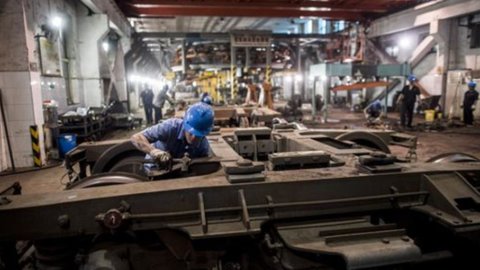Revenue growth continuesItalian industry. To say it is an analysis report of the industrial sectors of Promethea, according to which in 2016 the turnover of Italian industry will grow by 2,1% at constant prices. Compared to the growth in 2015, which depended for more than 70% on the recovery of the automotive sector, the increase in 2016 will take place at a more balanced pace between the various sectors.
Despite the good prospects, however, and the recovery of efficiency on the part of our companies, there is still a lot to do with a view toIndustry 4.0, which remains the real key to competition in this and, above all, the next decade. A sector, that of 4.0, in which we should follow the German model: in Germany, in fact, the Government has given a strategic direction to growth by launching a unitary project for the country.
Growth will mainly be supported by the internal question, in particular, positive consumption and investment prospects, thanks to improved credit access conditions.
The growth is expected to continue also in medium term: in the interval 2017-'20, the manufacturing turnover will stabilize at average growth rates of around 1,8%.
The analysis of the financial statements of the sector manufacturing leads to optimism: the 2015 financial statements, compared to those of 2014, show a largely positive evolution in terms of growth, profitability and self-financing capacity. Even within the European dynamics, the Italian productive fabric appears less vulnerable and more competitive.
Il trade balance, after a withdrawal that should continue also in the current year, it will be able to increase again and reach 95 billion in 2020, in a context of growing integration.
The efforts of internationalization of Italian companies are clearly growing and the foreign projection of Italian companies exceeds (both in terms of turnover and employees) the presence of foreign multinationals in Italy, which has remained more stable in recent years. Data analysis at the individual company level confirms the importance of the link between internationalization and competitiveness. Being part of an international chain represents, for many companies, a key factor towards the acquisition of essential strategic factors to grow and face the competition.
Sector perspectives
As far as individual sectors are concerned, growth will continue to be more intense in those sectors with a higher presence of multinational companies, with national or foreign capital (automotive, pharmaceutical, consumer goods, electrical engineering). the sector ofAutomotive and motorcycles will be confirmed as one of the most dynamic, despite a physiological slowdown after the leap in the two-year period 2015-'16, thanks to the positive forecasts on domestic and foreign demand and the rediscovered centrality of the national production bases.
The system fashion e Furnishings it will still be driven by the foreign channel and fashion will provide the largest contribution to improving the overall balance of industry. Once the worst phase of the crisis on the domestic and European market is over, furniture companies will also benefit from the positive effects of the good positioning acquired by the more structured and competitive companies remaining on the market.
THEFood and beverages, a leading sector in terms of turnover since 2009, will continue to contribute to the development of Italian manufacturing. The second sector, mechanics, will benefit from the restart of investments on the domestic front but will grow at a lower rate than the manufacturing average, particularly in the four-year period 2017-'20. On the mechanical front, more innovative ways could open up linked to the world of digital manufacturing.





